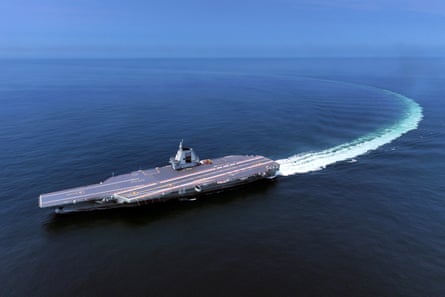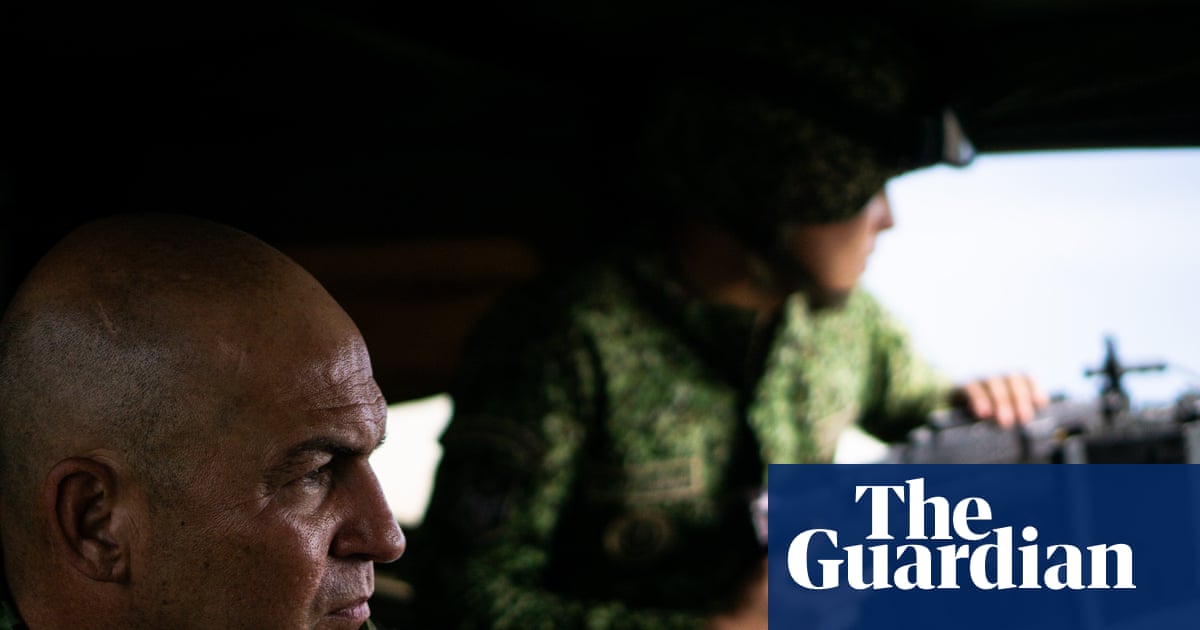China’s newest and most advanced aircraft carrier officially entered service this week, signalling a new era in Chinese military expansion after a ceremony overseen by the country’s leader, Xi Jinping, state media has confirmed.
The Fujian is China’s first domestically designed and built aircraft carrier, and the third for China’s rapidly expanding navy, which is already the world’s biggest by ship count.
The advanced features on the new ship include an electromagnetic launch system that causes less stress to the aircraft and the ship, and allows for more precise control over speed. It can also launch a wider range of aircraft than the steam system used on most US carriers.
The vessel is one of the most high profile signs of Xi’s long-running efforts to overhaul and modernise the People’s Liberation Army (PLA) and it joins the older Soviet designed and built Liaoning, and the Soviet-designed but Chinese-built Shandong, in active service. China now has the second most carriers in the world, ahead of the UK, India and Italy – who have two each – but still far behind its key rival the US, which has 11.
Compared to the ski-jump system of the Liaoning and Shandong, the Fujian’s electromagnetic launch also gives China the ability to deploy heavier aircraft, with full fuel loads, such as the KJ-600 early warning and control plane, which it successfully tested during its sea trials. State media also touted the craft’s ability to launch fighter jet sorties at faster rates.
China’s navy said it launched the latest J-35 stealth fighter and J-15T heavy fighter from the Fujian, giving the new carrier “full-deck operation capability”. US military analysts have said the Fujian’s configuration does not match the US’s newer carriers as it doesn’t appear to allow for concurrent takeoffs and landings, but its electromagnetic launch system is found only on the latest US navy Ford-class carriers.

China’s shipbuilding operates at an unrivalled pace but is secretive, and observers scour state media alerts and satellite images for signs of the latest developments and innovations.
This year the PLA has been testing several new barge ships, designed to create a loading dock from almost a kilometre out from shore, to bypass rough seas and rocky coastlines. For several years observers have also analysed the development of dual-use “roll-on-roll-off” (roro) ferries repurposed to carry military equipment across the Taiwan Strait. There is some evidence they are already working on a fourth carrier.
Having more carriers vastly expands the area in which China can patrol, with at least two in operation at any one time. The PLA advancement is particularly focused on reaching capability to invade and annex Taiwan, or at least conduct a blockade, even if the US decides to defend Taiwan. It is also focused on enforcing territorial claims and dominance in areas such as the South China Sea and East China Sea, and pursuing an overall goal of becoming a major player on the high seas, and to rival US power in the Pacific.
“Carriers are key to Chinese leadership’s vision of China as a great power with a blue-water navy,” or one that can project power far from its coastal waters, said Greg Poling, director of the Asia Maritime Transparency Initiative at the Center for Strategic and International Studies.

“A carrier doesn’t really help you in the First Island Chain, but it’s key to that contest, if you want one, with the Americans in the wider Indo-Pacific,” Poling said, referring to the run of island nations from Japan to the Philippines that sit between China and the Pacific.
Raymond Kuo, director of the Rand Corporation’s “Taiwan policy initiative”, said examining the Fujian in terms of China v US was not necessarily the right way to assess its capabilities.
“US carriers are much more capable, but part of the issue is we are now much more vulnerable to anti-ship missiles, so having lighter carriers can be an advantage,” Kuo said.
China increasing its fleet to three also “severely complicates Taiwanese defensive plans” Kuo said. Taiwan’s defensive strategies had long included plans to move its war planes from the vulnerable west coast to the east, where they were protected by a mountain range. But with China now able to cover more areas with extra strike carrier groups, even if one is out of commission, the east coast was now much more open.
Earlier this year the PLA’s navy held live fire drills in the Tasman Sea between Australia and New Zealand for the first time, and conducted a circumnavigation of the Australian continent, drawing concern from Australia and its allies. It has also conducted joint drills with key ally, Russia.
China also debuted a raft of new technologies at its military parade in Beijing, designed to mark the 80th anniversary of the end of the second world war, which China calls the war of resistance against Japanese aggression.
Several newly developed weapons and aircraft were revealed, including hypersonic missiles designed to take out ships at sea, underwater drones, and electronic warfare planes that can fly with fighter jets to track moving targets for them while also drawing away fire. An unnamed aircraft that was either a real or mocked up stealth drone fighter also turned heads. Meanwhile the appearance of new submarine-launched and road mobile intercontinental ballistic missiles(ICMBs), confirmed that China now has a solid and diverse delivery system for nuclear strikes – from land, air and sea.

.png) 2 hours ago
7
2 hours ago
7

















































